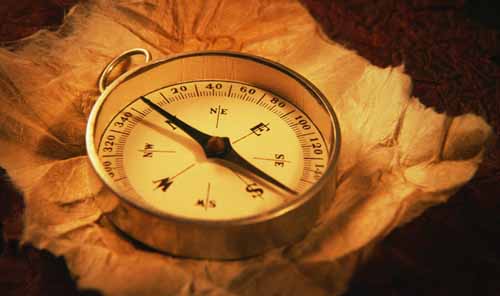

Discovery News - March 4, 2011
Earth's magnetic field is carting away toward Russia at a rate of about 40 miles a year. The shift widens the distance between true north and magnetic north, which is the direction a compass needle points. The phenomenon is normal, though it does have implications for modern life.
Follow the direction of a compass needle and you'll end up at the North Pole, right? Not these days. The planet's magnetic field is on the move, a normal enough phenomenon, but one that has some rather bizarre implications, such as the need to renumber airport runways.
Tampa International Airport on Florida's west coast just finished renaming its three runways, a laborious project that interrupted airport traffic for a month while runways were shut down for repainting.
Tampa's busiest runway was called 18R/36L, a designation indicating the runway is -- or was -- lined up 180 degrees from north when approached from the north and 360 degrees from north when approached from the south. (The letters "R" and "L" differentiate between the airport's two parallel runways.) The new designation, 19R/1L, accounts for a shift in the magnetic north pole, which is moving from far northern Canada toward Russia at a rate of about 40 miles per year. That means your compass is pointing about 40 miles closer to Russia than it did a year ago.
About every five to 10 years, the shift in the planet's magnetic pole builds up to the point where compass alignments and the direction of true north render some runway designations obsolete. The shift impacts some runways more than others, depending on which direction they face and when they were last numbered.
The planet's magnetic field is generated inside the Earth's core, which is made of liquid iron. It's hot and in response to the heat, the fluid moves. That creates electric fields, which are amplified on a planet-wide scale. The motion in the core is complicated and impacted by Earth rotation. The magnetic field tends to align itself with the axis of rotation, but it's not perfect. It tends to wander around.
Every 100,000 years or so, the field flips, meaning that compasses would point south, rather than north. It's been about 780,000 years since the last reversal -- before Homo sapiens existed. Geologic history shows the shifts are random and highly variable. Scientists can't predict when one will occur, or even if the planet is in the middle of one. It's like a bull run in market. You won't know it's happening until it's half over.